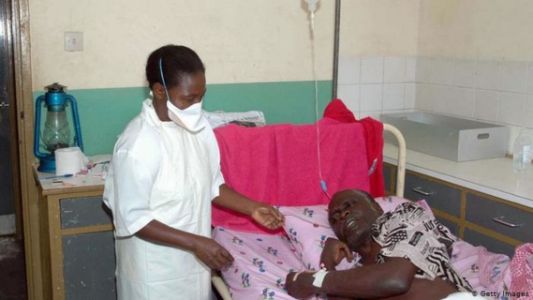
-
Published: 10 August 2021

In one of the first cases where that deadly disease was recorded in West Africa, the World Health Organization (WHO) said, yesterday Monday, that Guinea's health authorities had recorded the death of the Marburg virus.
There have been 12 major outbreaks of the Marburg virus since 1967, mostly in the southern and eastern African continent.
According to the World Health Organization (WHO), death rates in Marburg virus infection range from 24 to 88 per cent in previous outbreaks, indicating that the proportion depends on the strain of the virus and the response method.
The Marburg virus is reported to belong to the same Ebola family and has previously spread elsewhere across Africa, Angola, the Congo, Kenya, South Africa and Uganda.
The outbreak of the Marburg virus begins when an infected animal, such as a monkey or fruit bat, transmits the virus to a human being, which in turn transmits it to another human being by touching the body fluid of the infected person.
According to the World Health Organization (WHO), Marburg virus infection occurs through contact with the secretions and tissues of the infected body, indicating that it is a highly contagious hemorrhagic fever similar to the Ebola virus.
Symptoms of this deadly virus include headache, vomiting and muscle pain, as well as warming of the virus.
Some patients later bleed through the body's holes like eyes and ears.
There is no approved drug or vaccine against the Marburg virus, but drought treatment and other supportive care can improve a patient's chances of survival.
